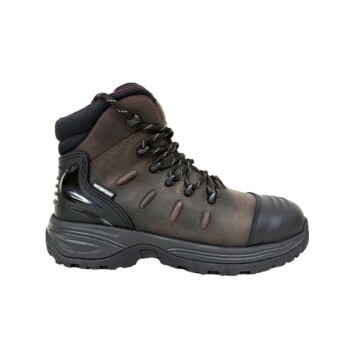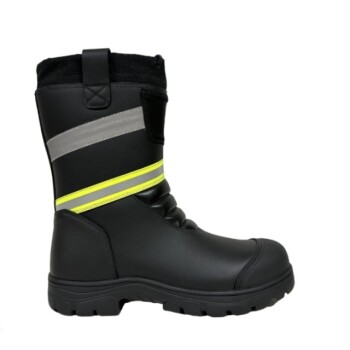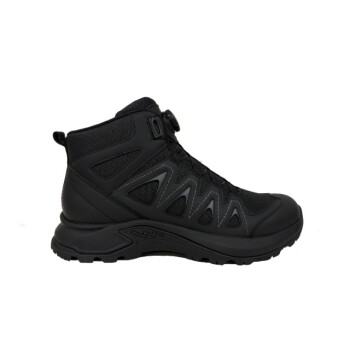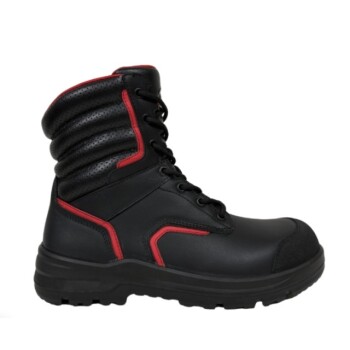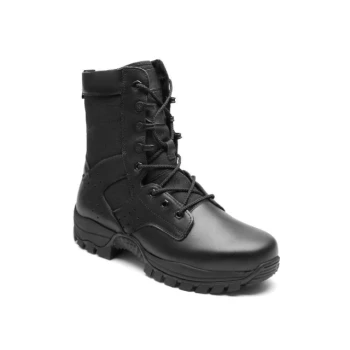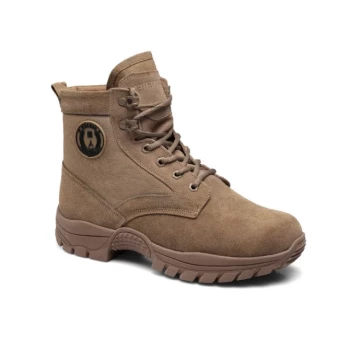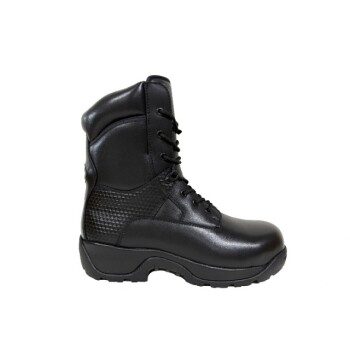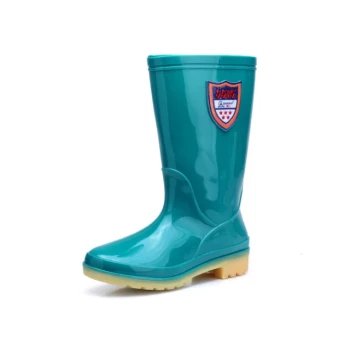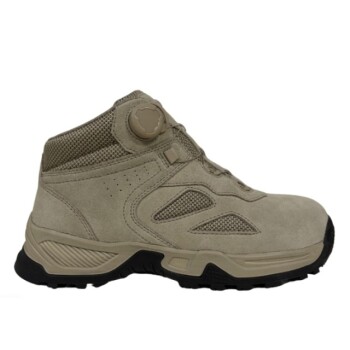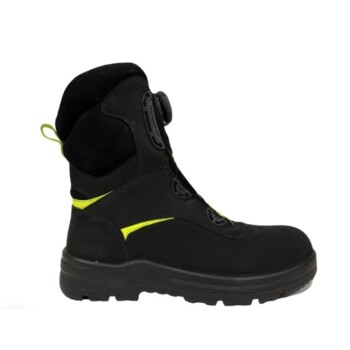Yes, heavy-duty work boots do stretch, but not in the way you might think. The process is more accurately described as the materials, particularly leather, conforming and molding to the unique shape of your foot over time. This break-in period can ease initial stiffness and minor pressure points, but it will not fundamentally change the boot's size.
The critical takeaway is that you cannot rely on stretching to fix a poor initial fit. A work boot should be snug but comfortable from the very first wear; the subsequent "stretching" is about personalizing the fit, not correcting a size error.
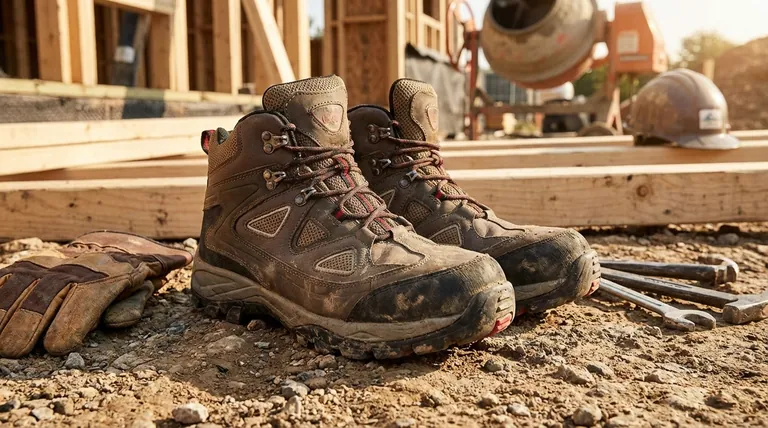
The Mechanics of Stretching: Conforming vs. Expanding
Understanding how a boot changes with wear is key to selecting the right pair. The material composition is the single most important factor.
Leather's Natural Properties
Leather is a natural material made of a dense fiber structure. As you wear the boots, the heat and moisture from your feet, combined with the pressure of walking, cause these fibers to relax and shift.
This process allows the leather to mold around the specific contours of your foot, such as the width of the ball or the height of your instep. This is the "stretch" that makes a broken-in boot so comfortable.
The Role of Linings
The material inside the boot also plays a significant role. Linings made from natural materials like wool or leather will conform along with the outer boot.
In contrast, many synthetic linings, such as jersey, are designed to remain true to size and will offer very little give.
Synthetic Materials Like Rubber
Work boots made from rubber or other synthetic compounds, like classic Wellington boots, have minimal stretch. These materials are engineered to maintain their shape for structural integrity and waterproofing.
You should not expect this type of boot to stretch or conform in any meaningful way. The fit you have on day one is the fit you will have for the life of the boot.
What Stretching Can (and Cannot) Fix
It's crucial to have realistic expectations for the break-in period. This knowledge prevents you from buying a boot that will never fit correctly.
What to Expect
A quality work boot will ease up in specific areas. You can expect slight pressure points across the widest part of your foot to lessen. The heel and ankle area will also soften and adapt to your movement, reducing initial stiffness.
What Not to Expect
Stretching will not solve fundamental size issues. If your toes are pressing against the end of the boot, it is too short and will never get longer. If the boot is painfully tight across its entire width, it is too narrow and will not expand enough to become comfortable.
Common Pitfalls to Avoid
Mistakes made during the purchasing process, often based on myths about stretching, are the primary cause of long-term discomfort and even injury.
The Myth of "Breaking In" a Small Boot
Never buy a boot that is noticeably too small with the hope that it will stretch to fit. This process is often painful and rarely successful. It puts undue stress on the boot's stitching and construction, potentially shortening its lifespan.
Ignoring the Importance of Width
Many people focus only on the length (the size number) and forget about width. A boot that is the correct length but too narrow will cause constant pain and pressure. This is a fit issue that minimal stretching cannot resolve.
Forcing the Stretch
Using boot stretchers or applying liquids to deliberately stretch a boot is not recommended for heavy-duty footwear. This can damage the structural integrity of the materials, compromise waterproofing, and lead to an uneven or overly loose fit that becomes a safety hazard.
Making the Right Choice for Your Goal
Use your initial assessment of the boot's fit to guide your decision.
- If your new boots feel snug with slight pressure in a few spots: This is likely the correct size, and these areas will conform to your foot with wear.
- If your toes are cramped or the boot is causing genuine pain: The boot is the wrong size. Do not purchase it hoping it will stretch.
- If you need a boot for wet conditions and are considering rubber: Prioritize a perfect fit from the start, as the material will not stretch or conform over time.
Ultimately, the goal is to find a boot that fits correctly from the moment you try it on, ensuring both immediate safety and long-term comfort.
Summary Table:
| Aspect | What Happens | What Doesn't Happen |
|---|---|---|
| Leather Boots | Molds to the contours of your foot (ball, instep). | Does not increase in length or overall size. |
| Synthetic/Rubber Boots | Minimal to no change in fit. | Will not conform to your foot shape. |
| Break-In Period | Eases stiffness and minor pressure points. | Cannot fix a boot that is too small or narrow. |
Struggling to find the perfect-fitting work boots in bulk?
As a large-scale manufacturer, 3515 produces a comprehensive range of footwear designed for durability and superior comfort from day one. We understand that a proper fit is non-negotiable for safety and productivity. Our production capabilities encompass all types of safety boots and work shoes for distributors, brand owners, and bulk clients.
Let us help you equip your team with boots that fit perfectly from the start. Contact our experts today to discuss your specific needs and explore our catalog.
Visual Guide
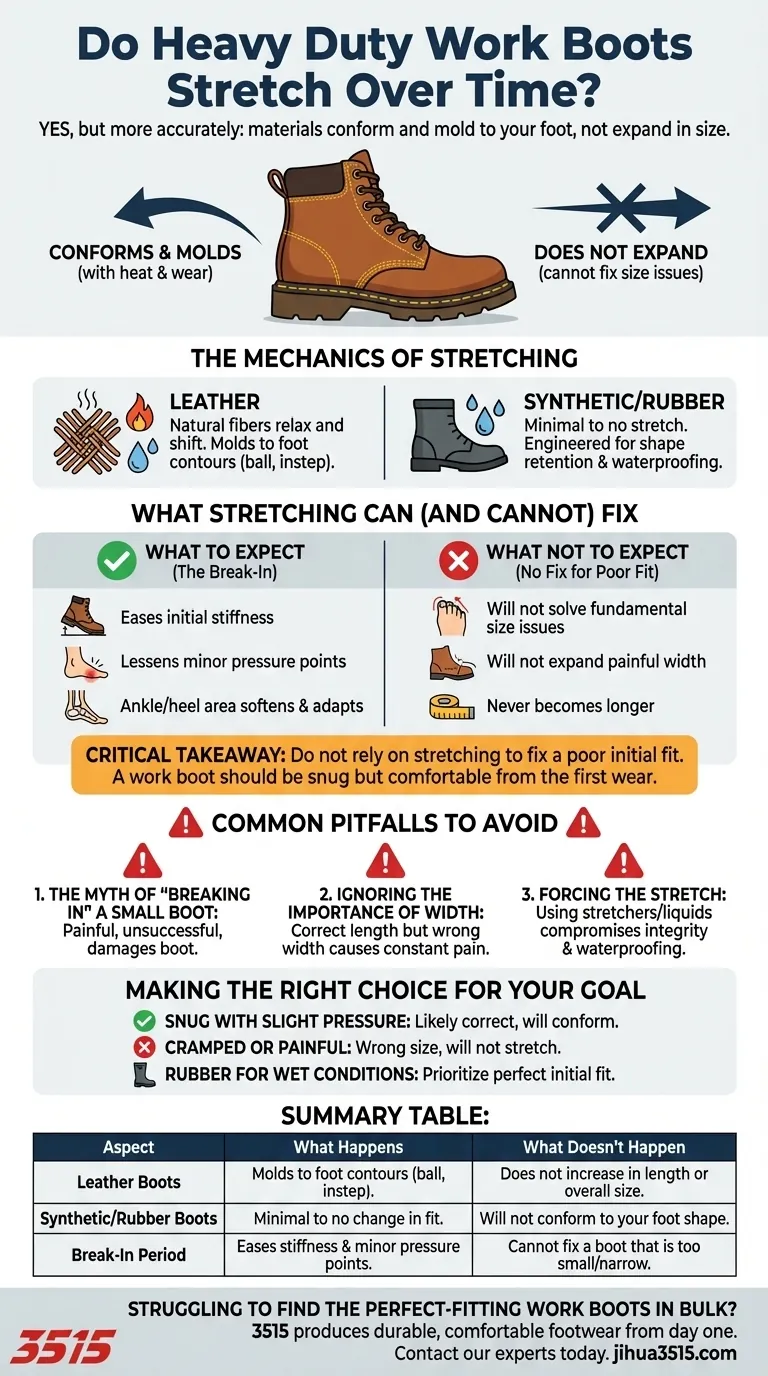
Related Products
- Safety Footwear Wholesale Manufacturer for Custom OEM/ODM Production
- Durable Goodyear Welt Leather Work Boots for Wholesale & Private Label
- Durable Leather Work Boots for Wholesale & Custom Manufacturing
- Wholesale Durable Leather Work Boots | 8-Inch Goodyear Welt Manufacturer
- Wholesale Leather Work Boots with Customizable Wedge Sole for Brands
People Also Ask
- What are the differences between steel toe, composite toe, and alloy toe Wellington boots? Choose the Right Safety Toe for Your Job
- Do snake bite boots work? Your Ultimate Guide to Effective Snake Bite Protection
- What are the cultural perspectives on wearing shoes in the house? A Guide to Home Etiquette & Hygiene
- How do safety shoes contribute to cost savings for companies? A Strategic Investment in Risk and Cost Management
- Is safety-toe as good as steel toe? Choose the Right Protection for Your Job








